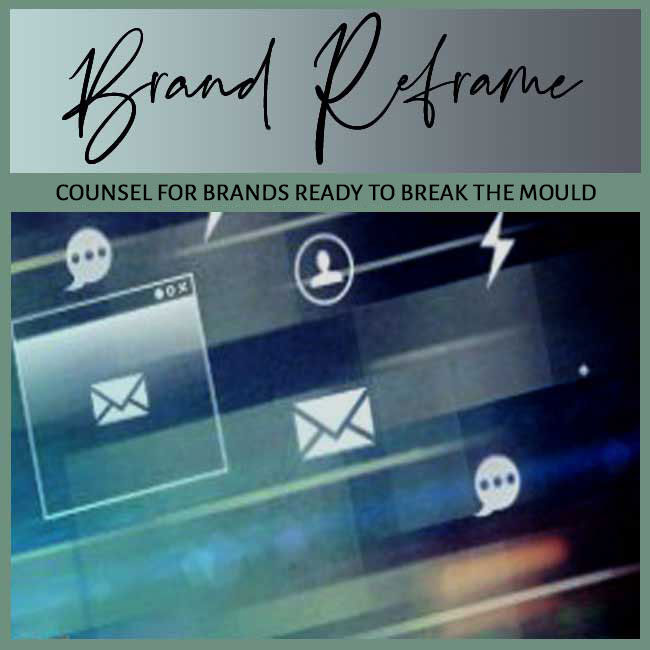
FOCUS: BRAND STRATEGY MISFIRES | AUDIENCE: STEWARDS OF PLATEAUED BRANDS
BY: SHOBHA PONNAPPA | BRAND BREAKTHROUGH STRATEGIST | 45 YEARS | 125+ CLIENTS
I answer 6 tough questions about why competitors can take your original idea, make a few tweaks, and end up outperforming you.
I often work with founders who’ve pioneered a concept, only to watch others refine and market it better. Their competitors don’t just mimic the idea … they package, position, and promote it in ways that make the originator look slow to adapt. It’s not theft that stings most … it’s being outplayed on your own field. In this post, I’ll tackle the six questions I hear most from leaders in this frustrating position.
Competitors who follow your lead have one advantage: they can skip the trial-and-error phase you went through. By observing your mistakes and successes, they enter the market with a refined approach, already optimised for better reception. This gives them speed, cost savings, and sharper messaging from the outset.
The second advantage is perception. If they launch with better design, clearer benefits, and a more compelling story, the market assumes they’re the innovators. Visibility often trumps origin in the public mind, especially when buyers are busy and don’t research the history behind an idea.
First-mover advantage is fragile without constant momentum. The market rewards not just the first to appear, but the first to scale and dominate awareness. If your launch energy fades before the market has fully absorbed your offer, you leave room for others to seize attention.
Timing is also a factor. If your early entry came before the market was fully ready, your growth curve might have stalled. Competitors arriving later can benefit from a riper, more receptive audience … essentially riding the wave you created, but at its peak.
In most cases, calling out copycats doesn’t serve your long-term interests. Public complaints can make you seem defensive, while your competitor gets free publicity. Worse, it distracts you from improving your offer and strengthening your position.
Instead, focus on reinforcing your brand as the trusted source. Share the origin story in ways that feel authentic, not accusatory, and pair it with fresh innovations. The more value you create now, the less relevant the copying becomes.
Treat each innovation as a stepping stone, not a final destination. If you view a product launch as the finish line, you’ll slow down. By contrast, if you treat it as the baseline for the next iteration, you’ll stay ahead of those who are still copying the last version.
Also, diversify your points of advantage. Competitors may copy a product feature, but they can’t easily copy your relationships, culture, or service experience. The more dimensions you lead on, the harder it is for them to catch up.
It’s possible. Overly transparent communications can serve as a blueprint for competitors. If your marketing gives away every detail of your process, you remove the need for them to figure things out themselves.
This doesn’t mean you should be secretive … just strategic. Share the outcome and benefits in public channels, but reserve the exact mechanics for client conversations, private demos, or behind gated content that builds your own leads first.
Begin by sharpening your positioning so it’s emotionally and strategically distinct, not just functionally different. Copycats can replicate your features, but it’s harder to mimic a deeply resonant brand narrative that connects with your ideal buyers.
Next, move decisively on upgrades or complementary offers. Even a small but visible improvement can signal to the market that you’re evolving … making it harder for competitors to close the gap and outperform you on your own concept.
If this situation sounds familiar, your best defence is relentless forward motion. Being first isn’t enough … you need to be fastest to improve, sharpest in story, and boldest in execution. By focusing on what you can do next, rather than what they’ve taken, you reclaim the advantage and reframe the game.
If you’re an investor seeking momentum for your portfolio brands, this FAQ Insight Post I wrote could interest you: “FAQs: When Brand Culture Reflects Old-School Founder Bias.“
And if you’re a solo expert looking to sharpen traction, this FAQ Insight Post I worked on may resonate: “FAQs: When Taglines and Brand Promise Don’t Match Perfectly.“

"One BIG IDEA can turn brand stagnation into unstoppable movement. Spots are limited each week ... book your breakthrough session now."
Shobha Ponnappa
More Breakthrough Ideas … Case Studies & FAQs … from the Brand Strategy Misfires Category
Case Studies
FAQ Insights
Smart insights, real-world frameworks, and idea-driven clarity – designed to help brands move.
Get my fortnightly Brand Reframe newsletter. Smart insights, distilled thinking, and focused momentum to help your brand lead.

Get my free AI strategy guide. Smart prompts, sharper briefs, and practical ways to make AI support your brand momentum.

Just fill in the form to join. Get my newsletter and the guide shown alongside, all with several game-changing tips.